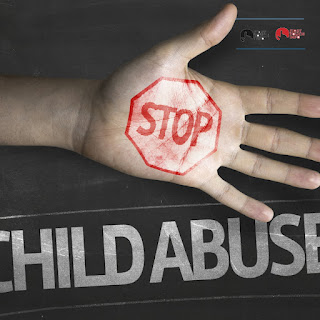While there are constitutional provisions protecting the adult citizen of every country, there are fewer or no law provisions guiding against the abuse of a child below 18 years of age.
Perhaps, this little concern about the possibility of child abuse may be a result of the firm belief that homes, families, and schools are safer places for children to thrive.
There, they have their parents, aunts, uncles, caregivers, and teachers who are in the best position to give them the needed care and support.
But alas, research by the Australian Bureau of Statistics (ABS) Personal Safety Survey (2005), it was indicated that 55.6% of children experienced physical abuse by their father/stepfather, 25.9% experienced abuse from their mother/stepmother and 13.7% were abused by another known person, either a family member, friends, or stranger. Invariably, the ones who the children can be said to be safe with are mostly their abusers.
What is Child abuse?
Unlike what we all know to be child abuse, the definition of The Government of the Netherlands stands out. She proposed that: Child abuse is not just physical violence directed at a child. It is any form of maltreatment by an adult, which is violent or threatening to the child. This includes neglect.
Types of Child abuse
There are four distinct known child abuse types, they are:
Physical abuse: This involves intentionally inflicting physical pain on a child by a caregiver, friend, or the immediate parents of the child. Wounds, burns, fractures, and bruises are good examples of physical abuse. However, a severe act of punishment on a child at a such tender age can also be regarded as a form of physical abuse. In fact, in some countries, corporal punishment is a flag of physical abuse of children.
Emotional abuse: This is also known as psychological abuse. It is often invisible, however, it has a powerful influence on the child. Emotional abuse is the behavioral attitude of the guidance or parents in such a way that causes mental anguish to a child or children. Some notable examples are:
1. Withholding affection and kindness
2.Silencing the children's right to an opinion
3.Mocking or name-calling the child
4.Bullying
5.Threatening
6.Emotional blackmail and many more.
Sexual abuse
As the name implies, this is an act of making sexual advances to a minor below the age of 18. It involves sexually touching the child or having sexual relations with the child.
A situation where the child is being played with in such a way that causes the other person to be aroused is considered a flag of sexual abuse.
Some notable examples of sexual abuse are:
1.Looking at or showing sexually revealing images, toys, videos, and other related materials.
2.Encouraging the child to play in a sexually inappropriate manner.
3.Forcing a child to undress for sexual satisfaction
4.Penetrative assault such as rape or oral sex and many more non penetrative sexual activities such as kissing, rubbing, and masturbating.
Neglect
The surprising wonder of child abuse is neglect. Child neglect is a situation when a caregiver or parents refuse to provide adequate attention to the well-being of the child due to continual unavailability.
It also includes a situation where a child's basic needs are not met or attended to. In most cases, neglect may be referred to the material needs of the child, but of course, neglect also involves a lack of emotional needs, inadequate health care, lack of caregiver or parents' attention, and lots more.
Symptoms
The following are the telling signals or symptoms of child abuse in every child. They are:
1. Withdrawal from friends
2.Change in a known behavior. For example, if a child is known to be accommodating and lively, he or she may become taciturn because of abuse by a trusted person.
3. Poor academic performance Nightmares
4.Suicides attempt or self-harm
5.Injuries, such as bruises, wounds, burns, and more.
6.Inappropriate sexual behavior by the child at that tender age Depression Poor growth Loss of self confidence and lots more
Prevention
To keep your children safe from exploitation or abuse in the home, school, and community, the following ideas would be helpful.
Be an inclusive parent.
Nurture and care for your children at this tender age.
Come to their level, understand what they are going through, play with them and provide them with needed support.
Be well aware of your child's caregiver. Ensure your child's caregiver is a trusted person that is well-known to you. Most importantly, keep an eye on your child's caregiver to ensure your child's safety.
Teach your child when to say no. Ensure your children understand that he or she doesn't have to say yes at all times.
Assure him or her that it's okay to speak up when he or she is not comfortable with a task or when in a frightening or threatening situation.
Conclusively, your child is your future, so, take him or her personally as much as possible.





